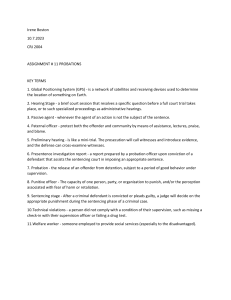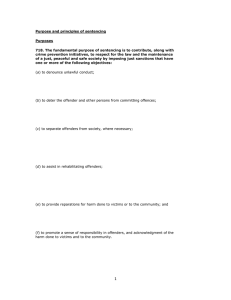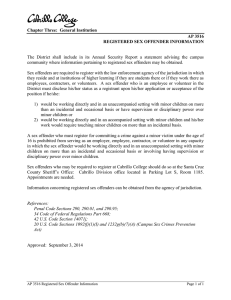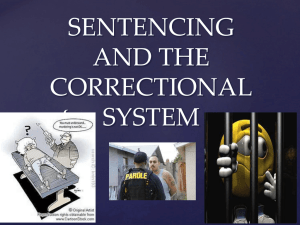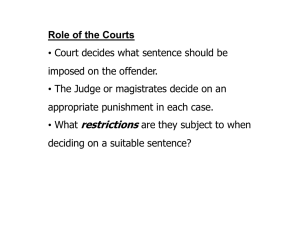Sentencing * Objectives and Types
advertisement
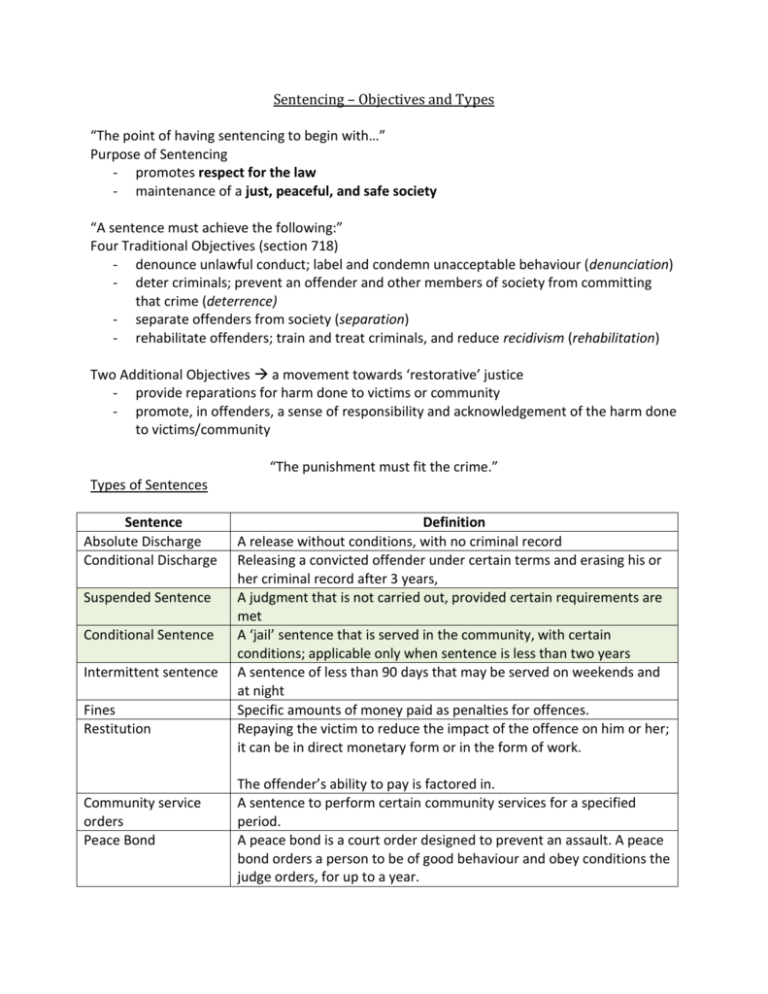
Sentencing – Objectives and Types “The point of having sentencing to begin with…” Purpose of Sentencing - promotes respect for the law - maintenance of a just, peaceful, and safe society “A sentence must achieve the following:” Four Traditional Objectives (section 718) - denounce unlawful conduct; label and condemn unacceptable behaviour (denunciation) - deter criminals; prevent an offender and other members of society from committing that crime (deterrence) - separate offenders from society (separation) - rehabilitate offenders; train and treat criminals, and reduce recidivism (rehabilitation) Two Additional Objectives a movement towards ‘restorative’ justice - provide reparations for harm done to victims or community - promote, in offenders, a sense of responsibility and acknowledgement of the harm done to victims/community “The punishment must fit the crime.” Types of Sentences Sentence Absolute Discharge Conditional Discharge Suspended Sentence Conditional Sentence Intermittent sentence Fines Restitution Community service orders Peace Bond Definition A release without conditions, with no criminal record Releasing a convicted offender under certain terms and erasing his or her criminal record after 3 years, A judgment that is not carried out, provided certain requirements are met A ‘jail’ sentence that is served in the community, with certain conditions; applicable only when sentence is less than two years A sentence of less than 90 days that may be served on weekends and at night Specific amounts of money paid as penalties for offences. Repaying the victim to reduce the impact of the offence on him or her; it can be in direct monetary form or in the form of work. The offender’s ability to pay is factored in. A sentence to perform certain community services for a specified period. A peace bond is a court order designed to prevent an assault. A peace bond orders a person to be of good behaviour and obey conditions the judge orders, for up to a year.

